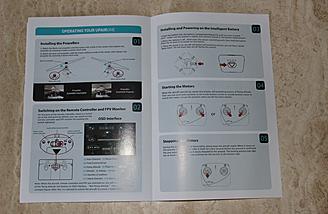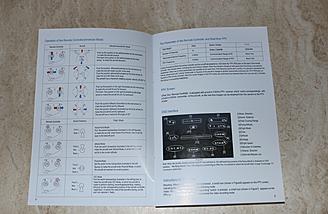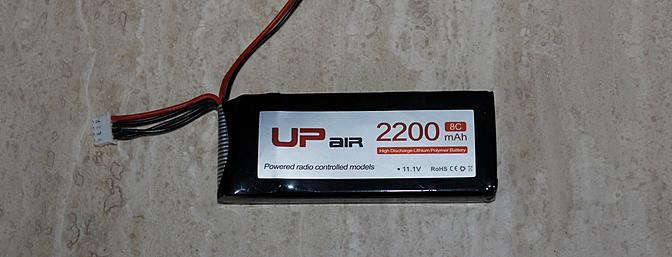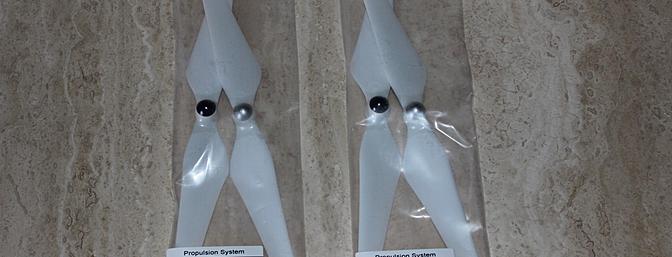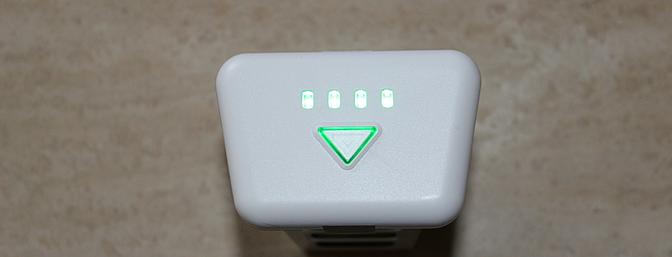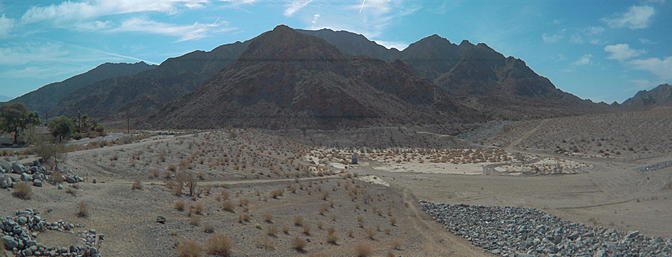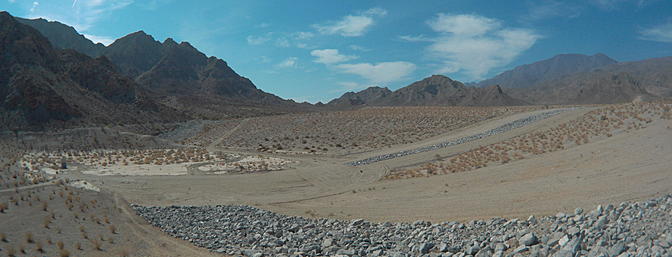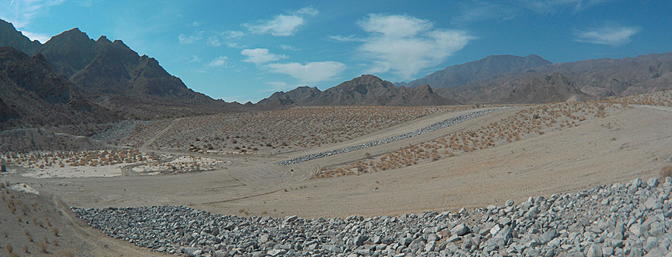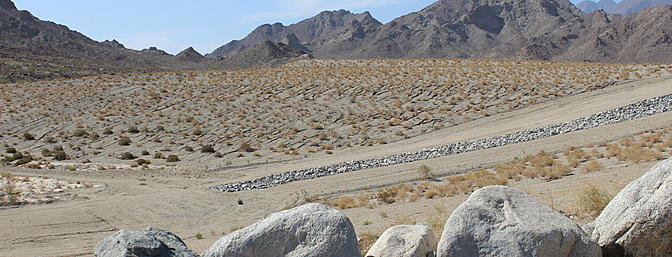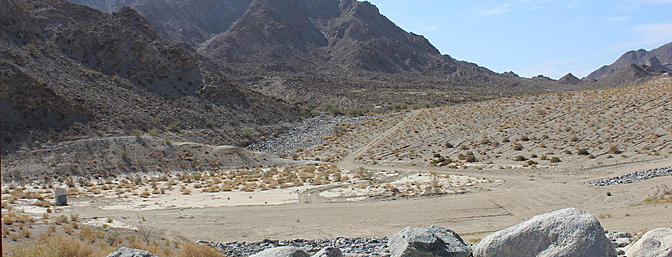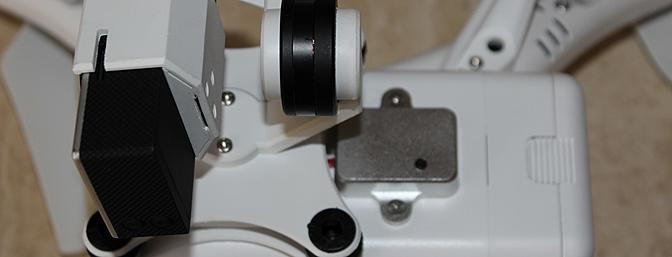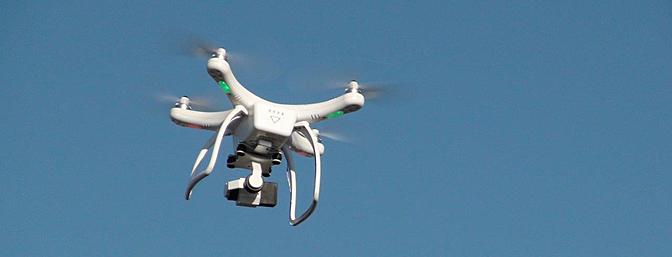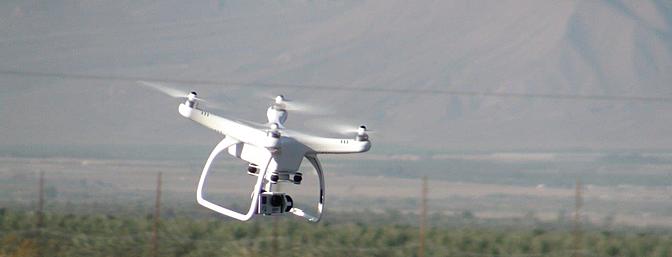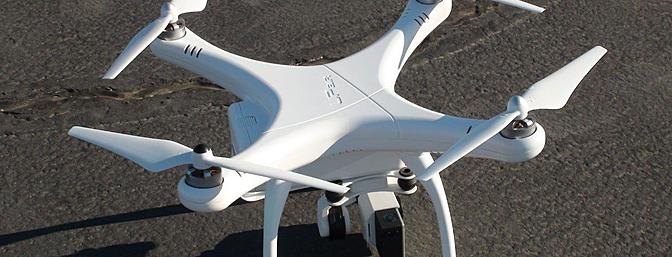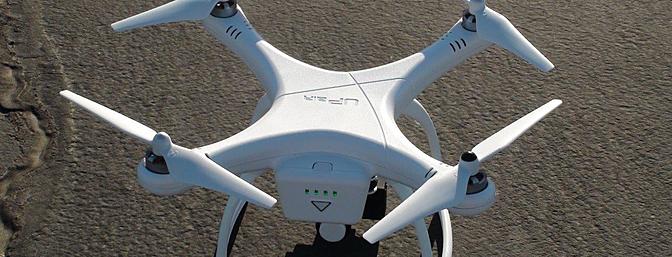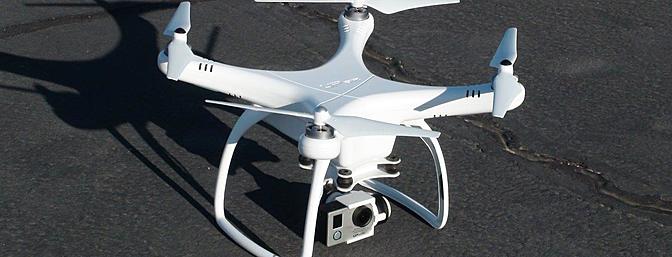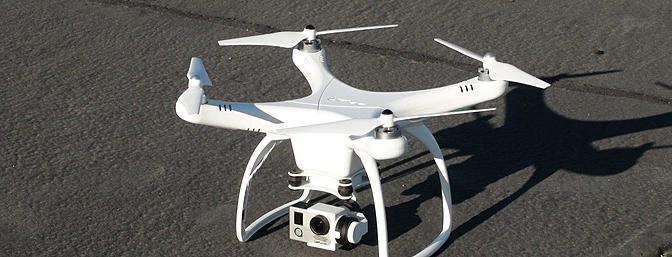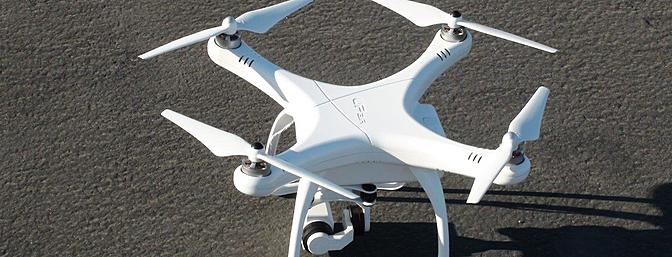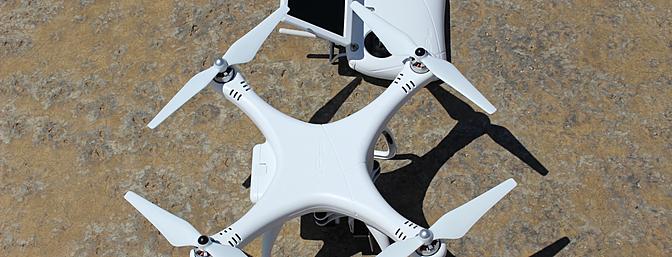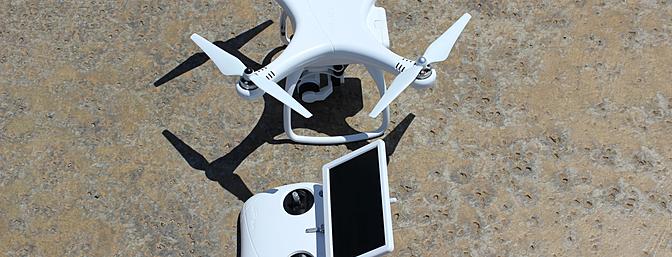UPair One RTF Quadcopter- RCGroups Review
UPair One RTF Quadcopter- RCGroups Review
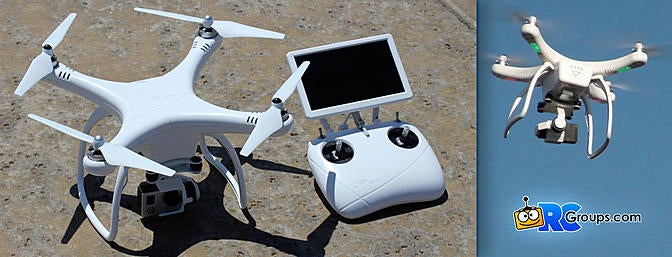
Introduction
UPair One RTF Quadcopter |
|

|
|
| Total Flying Weight: | 47.62 oz (1350 g) |
| Rotor Span: | 14" (355 mm) |
| Height: | 8.66" (220 mm) |
| Construction: | Polycarbonate/ABS composite plastic shell and skids; plastic gimbal mounts with silicone dampeners; plastic propellers |
| Onboard Electronics: | UPair proprietary ten-channel 2.4 GHz multirotor |
| Transmitter: | UPair ten-channel 2.4 GHz multirotor with 5.8 GHz FPV screen, gimbal pitch control, video/photo selector switch, flight mode switch and 2200mAh 3S lithium polymer battery |
| Battery: | UPair 5400mAh 3S intelligent lithium polymer |
| Motors: | UPair 2212 brushless outrunner; Kv rating not specified |
| Propellers: | UPair 9450; identical to those of the DJI Phantom 3 |
| Camera: | UPair by Firefly with Sony lens and CMOS pickup, 900mAh lithium-ion battery, OLED status display, WiFi, HDMI and USB connectivity and up to 4K resolution in .mov and .jpg formats; 32 GB Class 4 micro SD card required |
| Gimbal: | UPair two-axis with gyroscopic control and brushless motors; maximum pitch 90 degrees; tilt is adjustable via the transmitter |
| Operator Skill Level/Age: | Experienced beginner; 14+ |
| Typical Flight Duration: | 19 - 25 minutes |
| Manufacturer: | Shenzhen GTEN Innovation Technology Company, Ltd., N&Q, 8th Floor, Tower A, TCL Building, No.6, Gaoxin South 1st Ave., Nanshan District, Shenzhen, China, 518057 |
| Available From: | Banggood.com |
| Price (USD): | $399.99 - $469.99 plus shipping depending on warehouse |
From the smallest pocket-sized flyers to professional grade aerial photography platforms, there's no denying that quadcopters of all shapes and sizes have made a tremendous impact on this hobby. In the case of models such as the one I'm about to present, an entirely new facet of the hobby, that of quality aerial photography for amateurs, has sprung forth in just a few short years.
That's a good thing in my book.
It is with that in mind that I'm proud to share this RCGroups review of the new UPair One from our friends at Banggood.com. Also known as the UPair Chase, this is not the run-of-the-mill sort of inexpensive quad with brushed motors and a so-so camera setup. Rather, it's a surprisingly affordable yet extremely sophisticated, ready-to-fly quadcopter bristling with such niceties as a ten-channel radio system, a microprocessor controlled battery, GPS-linked stability, an improved camera with a Sony lens and CMOS pickup capable of shooting both 4K video and FPV at the same time, a brushless and gyroscopically controlled set of gimbals and four 2212 brushless motors spinning nine-inch propellers.
On paper, this is one formidable entry from a fairly new company, Shenzhen GTEN Innovation Technology Company, Ltd.
I'll take a moment to investigate just how formidable a model this is. If the owners' thread here on RCGroups is any indication, it's already gained quite a lot of attention. The thread may be found here.
Contents
The One comes as a complete package with the following:
- Fully assembled model
- Ten-channel radio system
- 5400mAh intelligent lithium polymer battery with its own special charger
- Built-in FPV screen on the transmitter featuring an adjustable aluminum mount
- 2200mAh 3S lithium polymer transmitter battery and charger
- High-definition video/photo camera
- Gyroscopically stabilized brushless gimbals remotely adjustable for tilt
- DJI-compatible propellers
- Illustrated instruction and quick start guides in both English and Chinese
Needed to get started:
- 32 GB Class 4 micro SD card, not included
- Optional USB cable to connect the camera to a computer or for charging the battery
- Optional WiFi smartphone software for the camera, available online
In typical Banggood fashion, the model arrived not boxed but rather wrapped in a couple of layers of foam and tape. It's a painstakingly labor intensive process as opposed to simply boxing shipments. Unfortunately, that also ensures that the product's own box will arrive with a few wrinkles which was once more the case here.
-
Nicely understated, the front of the box hints at what awaits inside.
-
The rear has a different view of the mode and a somewhat fanciful panorama on the FPV screen.
-
Under the lid is what might be presumed to be a safe operation warning list - in Chinese. The manuals, both in English and Chinese, can be seen peeking out from the right of the list.
-
Nothing like the thrill of seeing a new model for the first time.
-
Full manuals are supplied in English and Chinese...
-
...as are quick start manuals. Documentation could be both better and more plentiful in both.
Here are some samples of what awaits inside the manuals:
Still, the fully assembled One and its accessories arrived unscathed and it's an impressive thing at first sight.
The matte white finish of the body shell and matching transmitter along with the bead-blasted finish of the motor shells certainly evoked the obvious, namely the DJI Phantom family. This isn't surprising since this seems to be the current standard for aerial photography quads such as the One.
The only oddity was an empty box which, according to its label, once held a lithium polymer battery. It's the right size for the lithium polymer transmitter battery and I'll assume that Banggood gave my unit a quick test before shipping since it was found disconnected inside the transmitter. The other li-po, the 5400mAh microprocessor controlled flight battery, was already installed in the model.
Two chargers are provided, a standard two- and three-cell 800mAh AC charger for the transmitter battery and a special charger specifically for the flight battery. The paddle which runs from the charger to the battery looked to me like a miniaturized cross between the kinds of high-current paddles used in electric forklifts and studio lighting. Either way, a standard computerized charger of the type found in virtually every hobbyist's home isn't going to work, at least without rigging some spade connectors. Even then, I'd stick with the factory charger. The power supply has an LED which glows red when the battery is low and changes to green as the battery charges. Adding to the visuals are the four green LED status lights on the control panel of the battery itself. They flash in sequence as the pack charges; when all four begin to flash, the pack is nearly charged. When the "light show" shuts off, the battery is done.
-
Here are the supplied chargers with the flight battery charger shown on the left. The charger for the transmitter battery can be used for any number of small 3S lithium polymer batteries.
-
This is the transmitter itself with the protective film over the FPV screen still in place.
-
The FPV screen has a very wide range of motion, making it easy to store in the original box.
-
The rear of the transmitter shows the easily accessed battery.
Quite the opposite of the flight battery is the transmitter battery. Its 800mAh AC balancing charger can handle both 2S and 3S packs with standard JST-XH balancing plugs, making it incredibly useful as a second charger. LEDs which correspond to each cell glow red during charging and change to green when charging is complete.
The camera has its own 1600mAh 3.7V lithium ion battery nearly identical to that in the GoPro Hero which allows it to be used separately from the One. There's a micro USB connector coming off of the gimbal which plugs into the camera once it's slid into place; it turns the camera on and off from the transmitter. The camera doesn't have a charger of its own. The flight battery charges it through the USB connection or it can be independently charged via a USB cable, not included.
I had to find all of this out on my own because of the surprising lack of detail in the documentation; more on that later.
Getting Ready To Fly
While the batteries are charging, flight prep begins by screwing the props onto their respective motors. Two of the motors have left hand threads, making each prop self tightening.
Sharp-eyed readers will no doubt notice the similarity to the props of the DJI Phantom 3. I don't own a Phantom and even I noticed the similarity.
When a test flight in gusty conditions caused the One to tip over and damage two propellers, a comparison at the local hobby shop showed them to be virtually identical down to the graphics, fonts and even protective shrink wrap around the threads and hubs. I say "virtually" because the only difference I saw was the little "dji" logo cast in one of the blades on each prop. I'll make a very safe assumption that UPair contracted with the same factory to create their blades less the logo. The labels on the UPair props even say "white without logo," visible in the above photo. It certainly makes buying replacement props as easy as can be.
A trip to Best Buy for the SanDisk SD card led to the remarkable discovery that Best Buy carried the props and for less money! They sold there for US$6.99 a pair under DJI part number P36652C2158.
Powering Up
The transmitter has two power modes, one with and one without the screen powered up. There is a huge mistake in the manual in that regard.
It shows the off position in the center and it is instead all the way to the left when facing the rear of the transmitter. That center position turns on the transmitter by itself; going all the way to the right turns on the screen which is in line with the instructions.
My initial flight was, quite naturally, with the screen switched on, so I hadn't yet discovered the error. It was an error which almost cost me a brand new lithium polymer battery. I thought for certain it had been overly discharged by staying powered up all night, so much so that my ElectriFly Triton EQ charger beeped a low voltage error warning.
I had nothing to lose, so I used the supplied charger to try and bring it back. Thankfully, I was successful since the battery was so new. The One's own charger brought the battery back up to the point where the Triton would recognize it. Charging the battery at considerably less than 1C brought it back to life and it's still working fine. I'm careful to check the voltage and cell balance quite often, though.
That said, with the transmitter powered up, a quick tap on the battery's power switch quickly followed by a long press of the switch fires up the One.
The screen defaults to the "UPair" logo until a video link is established. Once established, the screen becomes a wealth of information with no fewer than ten separate bits of information:
- Direction of the nose
- Distance from takeoff point in kilometers
- Cruising range in kilometers
- Altitude in meters
- Flight battery voltage
- Flight mode
- Speed in km/h
- Number of GPS satellite links
- Takeoff point direction
- Attitude on a sliding scale
Should the FPV signal be off tune upon powering up, the system's binding button under the rubber plug at the rear of the transmitter can be used to reestablish the correct frequency.
When the sticks are moved together to either the lower inside or lower outside positions - not one inside and one outside - the motors will start at idle within a couple of seconds.
Flying
As the throttle stick is moved to the default halfway point, the motors will turn faster. Regardless of the flight mode, the motors will quickly spin to takeoff speed just past that halfway point. New users should be aware that the throttle isn't linear in altitude hold mode until the model lifts off and it caught me by surprise. It's also a function which the manual fails to mention.
There are three flight modes from top to bottom selectable via the toggle switch on the upper left of the transmitter:
- Altitude hold
- Position hold
- IOC (headless) mode
I started out at altitude hold; raising or lowering the throttle will move the One either up or down and keep a steady altitude at mid-stick. Position hold adds GPS stability while IOC, or "intelligent operating control" adds headless control which is excellent for keeping subjects in frame on video flybys. In other words, forward stick is forward, back is back, etc. regardless of which way the model's nose is pointing. It's excellent for fancy aerial photography, much as if an onboard cameraman were panning as the model flew by. Admittedly, this is a concept with which I'd had problems in the past, but a bit of research finally cleared away the cobwebs.
It became readily apparent that the One isn't made for speed so much as stability. Speed is fair at best; it's no racer, but then again, most racers aren't FPV/camera platforms either.
What it lacks in velocity is more than made up by the One's smooth, positive control. Despite having only two axes, the gimbal does a superb job of keeping the camera level which is clearly visible both at hover and during low flybys. It's also fun to fly and hovers hands off in the position hold mode. I felt overall control was somewhat less nimble in position hold, but it's excellent for steady photography and should make it very easy for a new pilot to get the hang of flying.
Aiding with orientation are four bright LEDs, red in front and green in back. It's seemingly backwards, but other models seem to have the same setup. Takes a bit of getting used to in the dark, but one will likely catch on rather quickly to the reversed colors.
-
The camera is shown in place on the gimbal with the model powered up. Otherwise, the camera simply falls over.
-
This is a detail shot of the camera and gimbal taken from underneath.
The full sized stills below were taken with the model in position hold in windy conditions at the "Top of the Cove" in La Quinta, California. They were uploaded directly from the camera via USB after I renamed the files. Once it locked on to one of the fifteen GPS satellites it had detected, it did an excellent job of staying in place. Switching back to altitude hold made it move rather abruptly because of the wind, but it was easy to regain control. A subsequent trip to the area resulted in video shot entirely in position hold mode. Not only was takeoff smoother, landing was even easier.
For comparison, here are two full resolution photos taken at the same location with my Canon EOS T3i in full auto mode with the regular 55mm lens:
Going back to the transmitter, the toggle switch on the upper left is the "shutdown mode" and return-to-home switch. It's normally left in the up position, or "shutdown." Flicking the switch rearward is supposed to return the model home and I certainly didn't expect what happened next.
Here's where things got weird the first time I tried it. The One didn't come back to the takeoff point right away as I'd thought it would. Rather, it casually climbed up about 25 feet - or about 7.5 meters - and stayed there! It refused to respond to the sticks and I thought for certain that I had a flyaway since this happened on the street in front of my house. I eventually regained control and landed the model, much to my relief.
Digging through the manual provided the answer in poorly translated English. If the altitude is lower than the set auto return altitude, the model climbs to the higher altitude and stays there until it returns to the takeoff point. The failsafe is supposed to work in much the same way, but I'll be darned if I was going to try it! There's no indication anywhere in the manual regarding the setting of the default altitude. I'll conclude by saying that the function is probably best used when the model is at sufficient altitude and even then, only in an emergency such as loss of orientation.
The external video of the One in action at the Coachella Valley Radio Control Club shot by club videographer George Muir shows the model being flown in altitude hold mode. Some onboard video was shot with the position hold mode; it's even more stable.
Camera, Gimbal Problems
The camera warrants special mention. A bit of research shows it to be a rebranded YKS Firefly 6S action camera with a glass lens and Sony chip. An OLED display in front serves as an easily navigated menu and it's capable of shooting 4K video at 24 frames per second. The 3.7V 1600mAh lithium-ion battery is automatically charged via the model or it can be charged separately with a USB cable. Not only is the battery a direct swap for the one found in the GoPro Hero as previously mentioned, the camera itself is sized the same as the Hero and it may be used with most GoPro accessories. It even has its own gyro stabilization.
Not bad for an action camera with an average price around US$100. However, if the model itself suffers from sparse, poorly translated instructions, no instructions beyond how to install it on the gimbal are provided. Thankfully, there's no shortage of online documentation and how-to videos and I'll leave it up to the reader to discover them.
What I will say is that even at the default 1080p/60 fps default, the camera takes absolutely stunning video. This makes it an excellent, inexpensive alternative to a GoPro, especially in a situation where a camera might be lost or damaged.
The image default is a fisheye view which can be electronically compensated. The electronics do a darn good job; I noticed only a hint of distortion at the sides of the picture as the camera was panned.
All is not unicorns and rainbows, however. The gimbal tilt control on the transmitter stopped working after a few flights; this seems to be a common problem based on my research. The gimbal stays level and tilts automatically as the attitude of the model changes, but there's no visible problem I could find such as a disconnected wire which would prevent me from tilting it manually. I opened up both the model and the transmitter after a few emails back and forth to Banggood.com and I saw no problems with the wiring. In fact, the gimbals' connecting plug is accessible and visible inside the battery compartment.
I also emailed Shenzhen GTEN several times with copies sent to Banggood. I received no response whatsoever from Shenzhen GTEN regarding a possible warranty claim.
I'll come right out and say it: There is no excuse whatsoever for this total lack of customer service on the part of the factory. I was also somewhat surprised that Banggood hadn't offered a new gimbal, but further examination revealed that the gimbals aren't listed as replacement parts. To their credit, Banggood offered some good troubleshooting suggestions, but none helped as I indicated earlier.
Another thing I'd posted earlier was the link to the model's discussion thread here at RCGroups. I'll offer it up here once more as a courtesy.
This thread covers other bizarre tendencies, namely intermittent video and video control. Left to its own devices, the One tends to shoot not continuous video, but rather bursts of video roughly two seconds in length. At other times, it shoots continuous video, but not always. Holding the video control button on the transmitter seems to help, but again, not always. While the camera has a time lapse feature, it wasn't switched on during the shooting of test videos. On its own, the camera operates just fine. Since the gimbal holds the camera tightly in place, I "solved" the issue by sliding the camera in, but not engaging the USB. That way, I could start and stop the camera manually.
I might expect or even accept an inexpensive quad's camera issues, but it's inexcusable in a machine selling for about US$470.
Is This For a Beginner?
Yes, but it's probably best that a beginner be comfortable with flying quads in all orientations. The One is stable and easy to fly once airborne in altitude hold and position hold modes, although it sometimes has a tendency to lift off abruptly in altitude hold mode. The extra stability offered by the position hold mode might be a big help to a budding pilot since the model holds its position quite well. It will, however, continue to respond to stick input.
More experienced quad pilots, especially those comfortable with camera rigs, will appreciate the IOS function for some really terrific flyby shots.
Flight Video and Photo Gallery
Here's some samples of onboard video at the exceptionally clear 1080p/60fps default:
| UPair One RTF Quadcopter from Banggood.com Onboard Video (3 min 48 sec) |
This is the external video shot in 720p; the footage at the club was shot at the same time as the onboard video:
| UPair One RTF Quadcopter from Banggood.com External Video (2 min 55 sec) |
Although it represents a real breakthrough in price, the UPair One RTF quadcopter lacks some of the polish of its competition. Documentation is kind of sparse, there is no documentation enclosed for the camera and the all-important spare parts support is lacking, not to mention non-existent customer service. I can't recall ever having a manufacturer ignore multiple inquiries, especially given the exposure these reviews give to a product. Again, utterly inexcusable.
Worse, the things which make for an excellent hobby grade camera rig are lacking even more. The powerful yet affordable UPair 4K camera is an amazing deal just on its own merits, but it doesn't work properly at all when connected to the gimbal and in my case, the gimbal no longer tilts remotely. The One doesn't have the speed and agility of a sport quad, so without the camera, it wouldn't be a lot of fun.
Another oddity is that of the onboard programming. Research shows that a standard micro USB plug is present on the flight controller, but it's inaccessible unless part of the body shell is cut away. That same research shows that the system is compatible with open source Mission Planner programming software, but for obvious reasons regarding safety and liability, I do not recommend trying to reprogram this model.
I like the One, but even though I do, I'm giving it a mere one-and-a-half thumbs up for the reasons outlined. Its direct competition from DJI suffered from growing pain and has become more sophisticated and reliable over the years; here's hoping UPair follows suit. In the meantime, I'll enjoy it as it is and hopefully there will come a time when I can get it working properly.
My sincerest thanks to James at Banggood.com for the privilege of reviewing this model. I can never sufficiently thank George Muir of the Coachella Valley Radio Control Club for his cheerful help regarding external video.
Jim T. Graham, Angela Haglund, Matt Gunn and Jason Cole are at the admins' desk here at RCGroups.com on behalf of you, our audience. Thanks for visiting and enjoy your stay!
Pluses and Minuses
Pluses include:
- A real price breakthrough for aerial 4K photography
- Accepts readily available DJI Phantom 3 propellers
- Outstanding video quality free of the "Jello Effect"
- Excellent FPV display with a wealth of information
- Excellent flight characteristics
- The altitude and position hold functions work perfectly via multiple GPS satellite links
- Brushless gimbal does a fantastic job of keeping the camera level
- Full-sized transmitter with great stick feel
- Readily available, standard sized transmitter battery
- Once this model and company get past their growing pains, this will be a serious contender in a very competitive market
Minuses include:
- Inexplicable failure of the remote camera tilt function
- Camera video malfunctions when connected to the USB plug on the gimbal
- Non-existent factory support; all emails went unanswered
- Sparse documentation with poor translation and omissions
- Big error regarding the transmitter power switch
| Thread Tools |
|
|
|
|
|
Will the gimbal accept an actual GoPro?
|
|
|
|
|
|
|
|
|
The Firefly camera is the same size as the GoPro, but I believe that the USB on the GoPro is on the opposite side. So, yes if you don't mind manually starting and stopping the camera. The mount should securely hold a GoPro without problems.
|
|
|
|
|
|
|
|
|
There is a great deal on RCMaster of this drone if you buye it here use this Coupon and get 15€ off.
If youre order is over 200€ the coupon can be used. 15EUR241597OFF |
|
|
|
|
|
|
|
|
Great review
WOW, a thorough, detailed very professional review, Well done.
|
|
|
|
|
|
|
|
|
|
|
|
|
|
|
||
|
|
Quote:
The OLED display shows 4K, but I'm fairly certain that a lot of computers won't render 4K video. I'm just blown away by the quality of the 1080p. |
|
|
|
||
|
|
|
|
|
if the look at honest reviews of the fiefly 6 you will quite a few off them talk about the res
|
|
|
|
|
|
|
|
|
|
|
|
|
